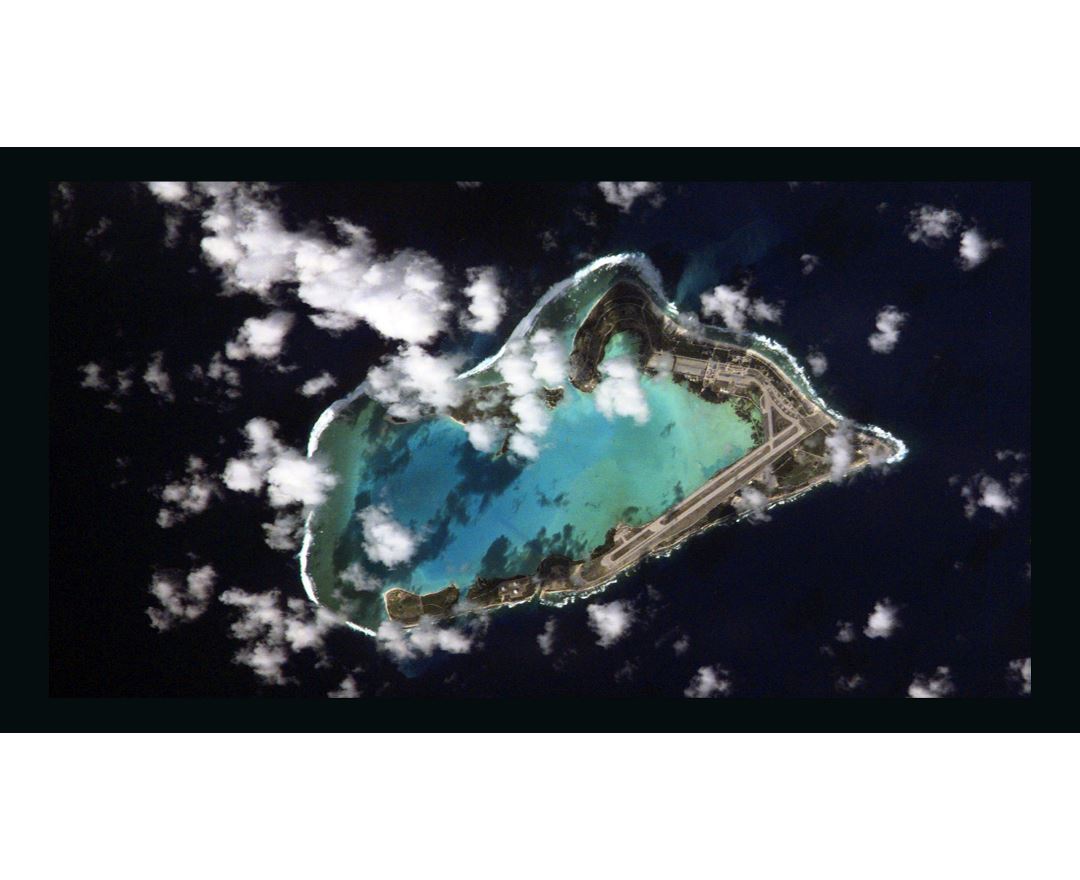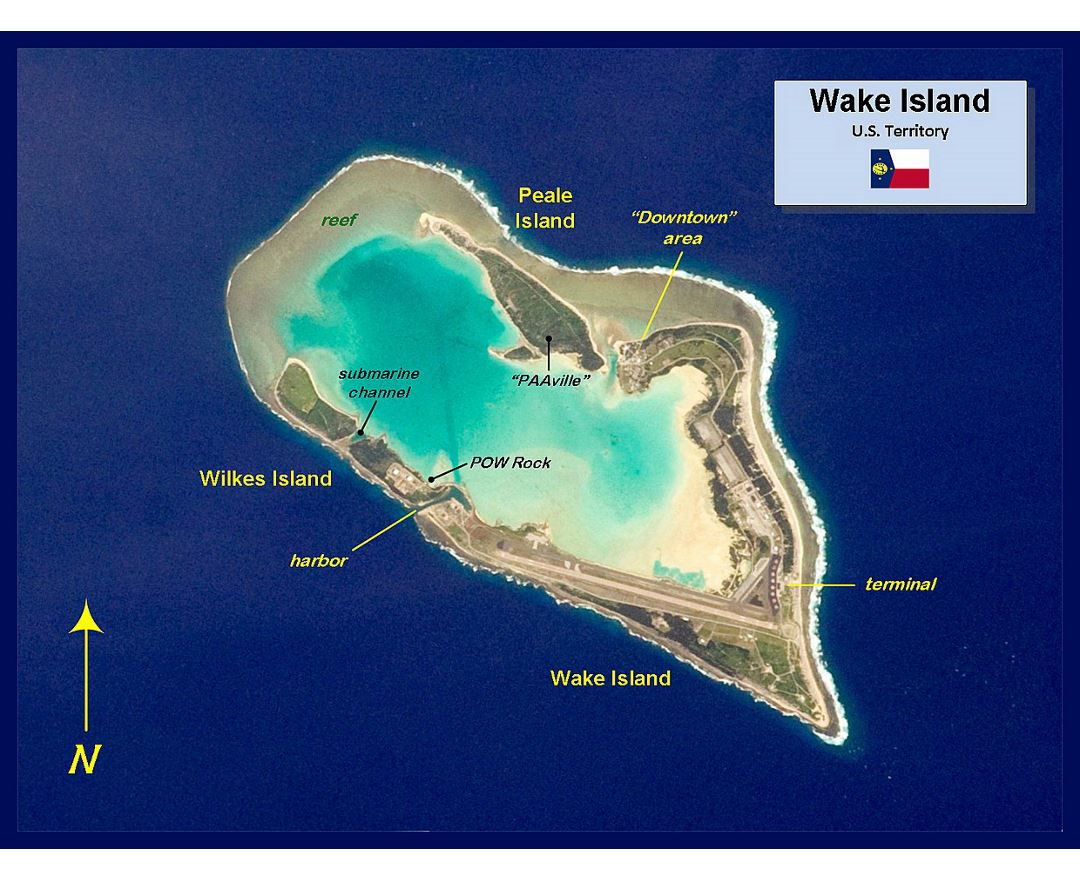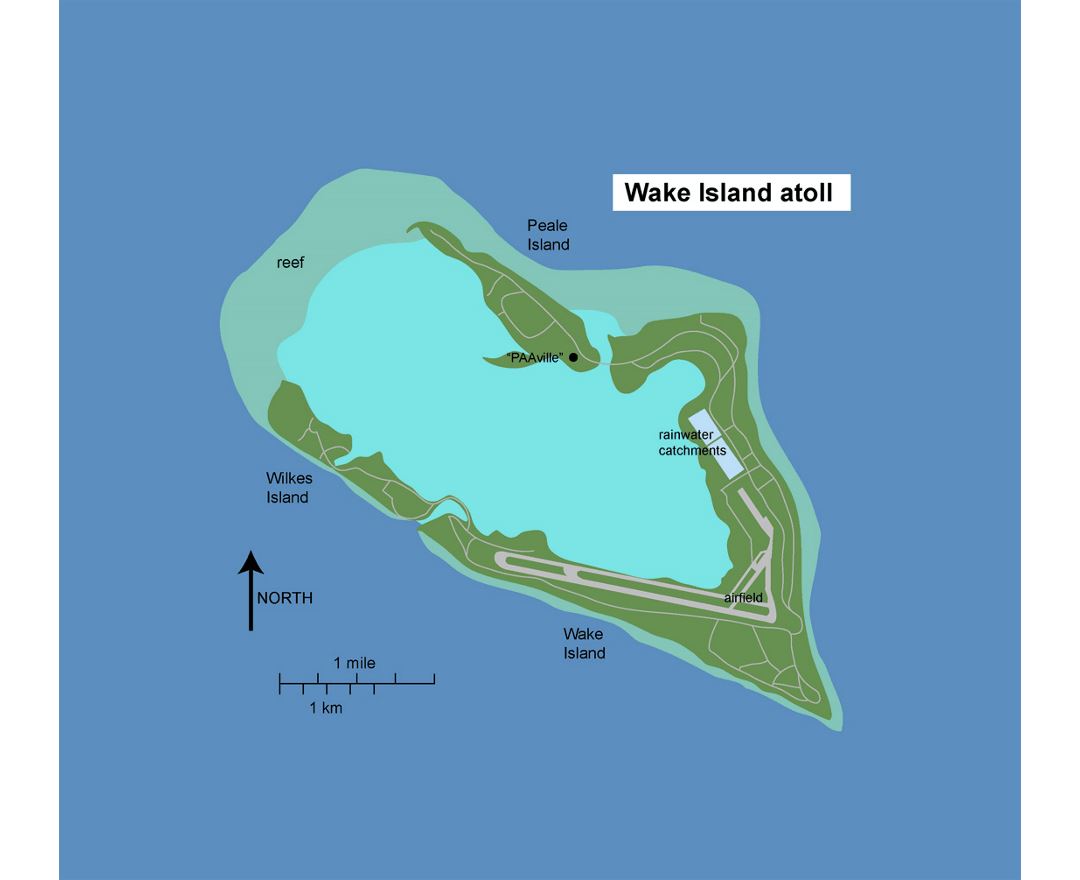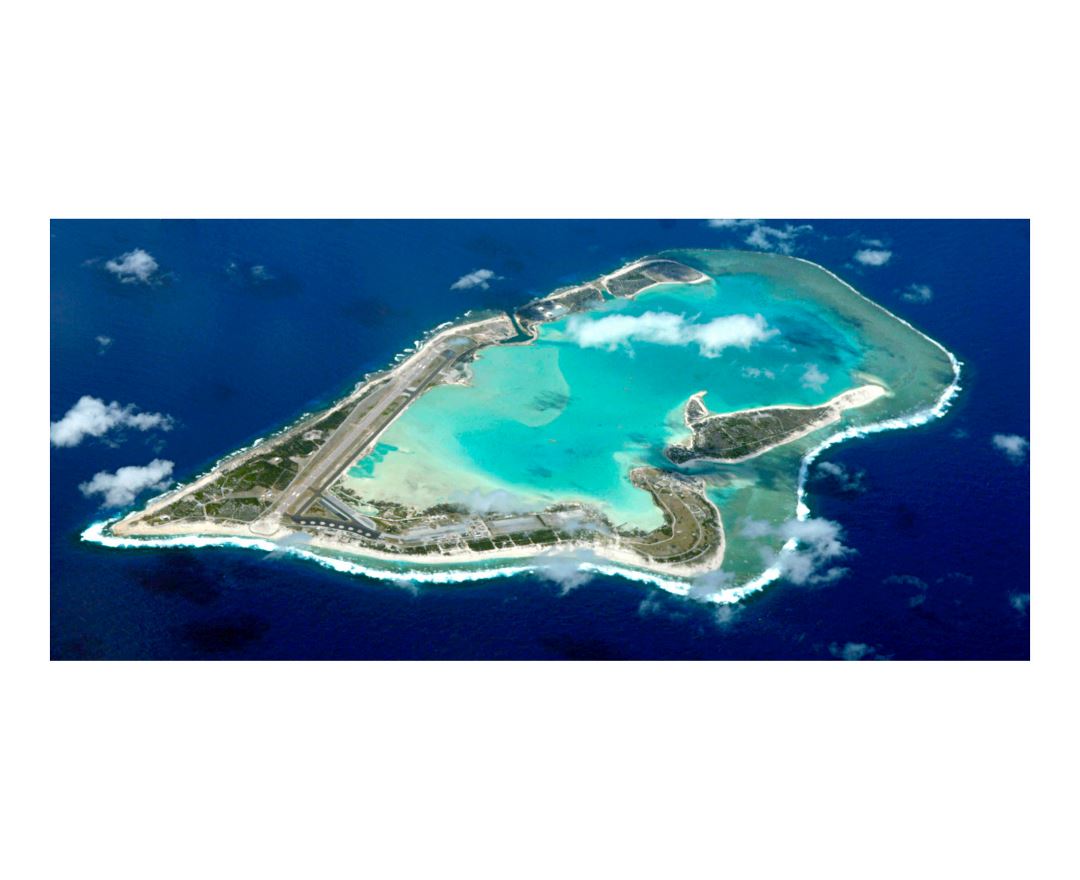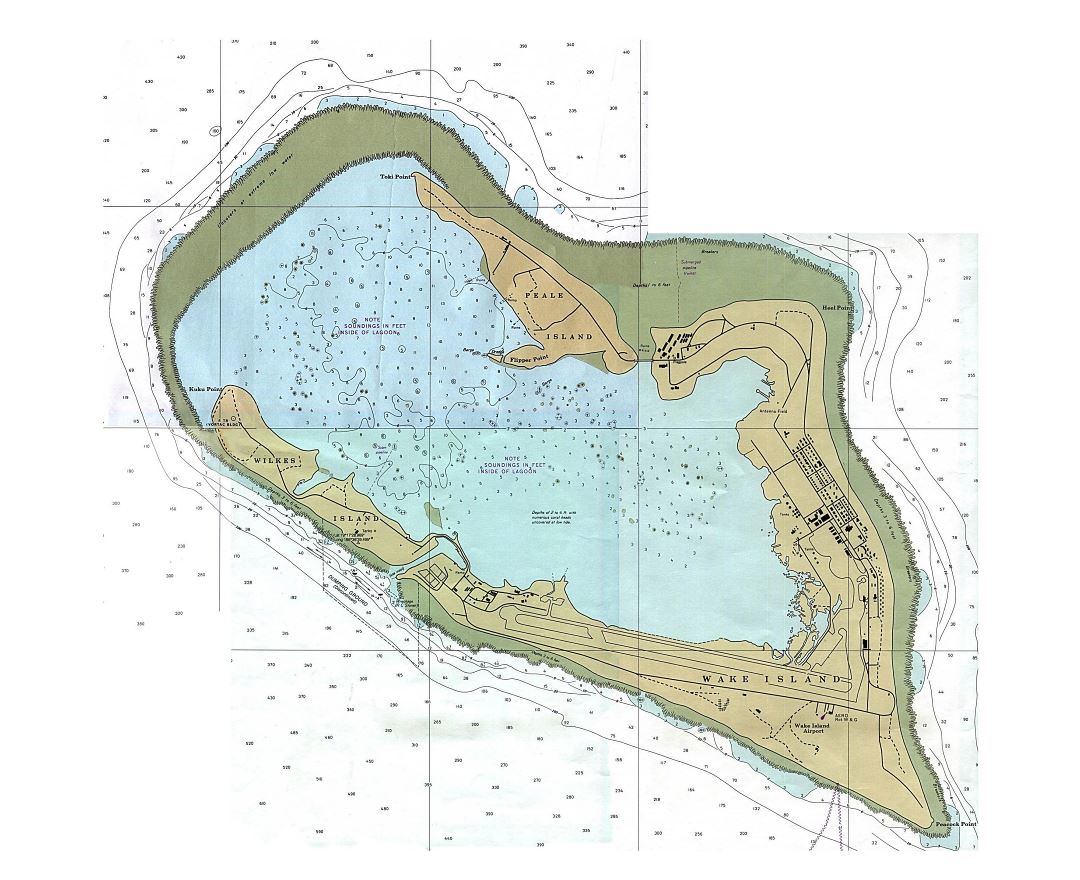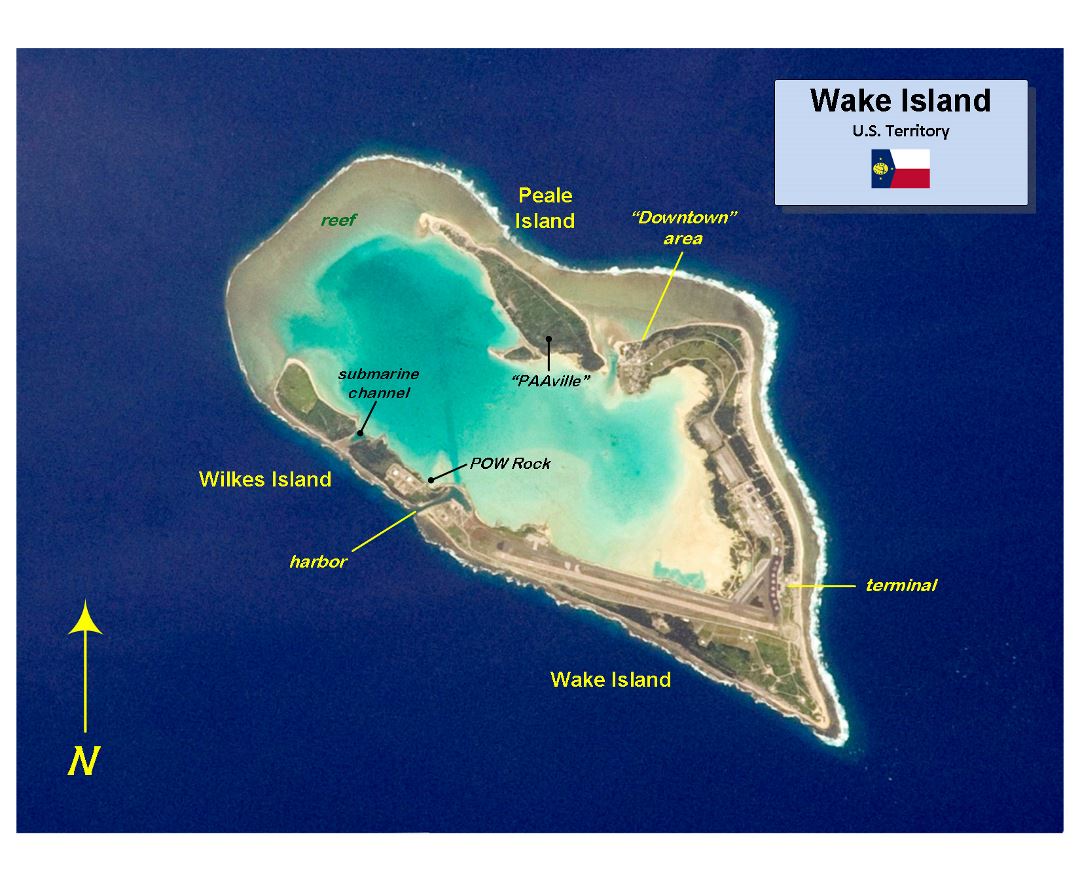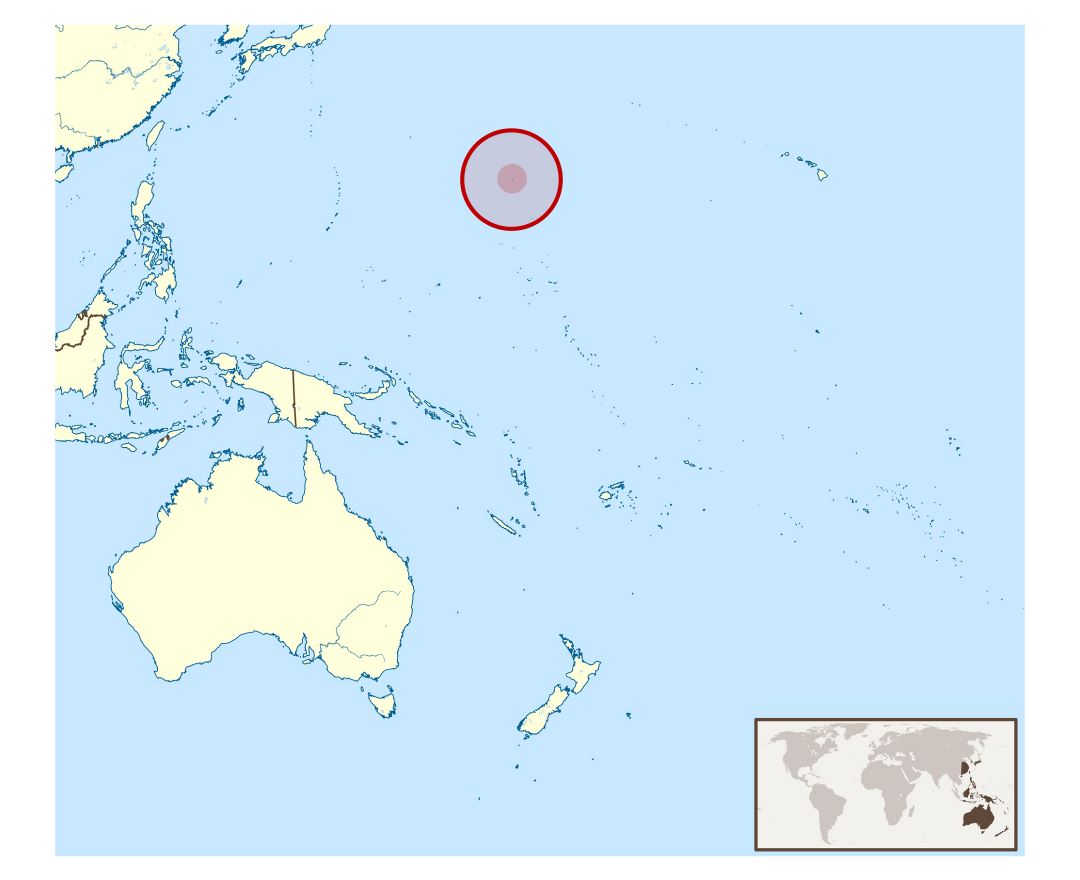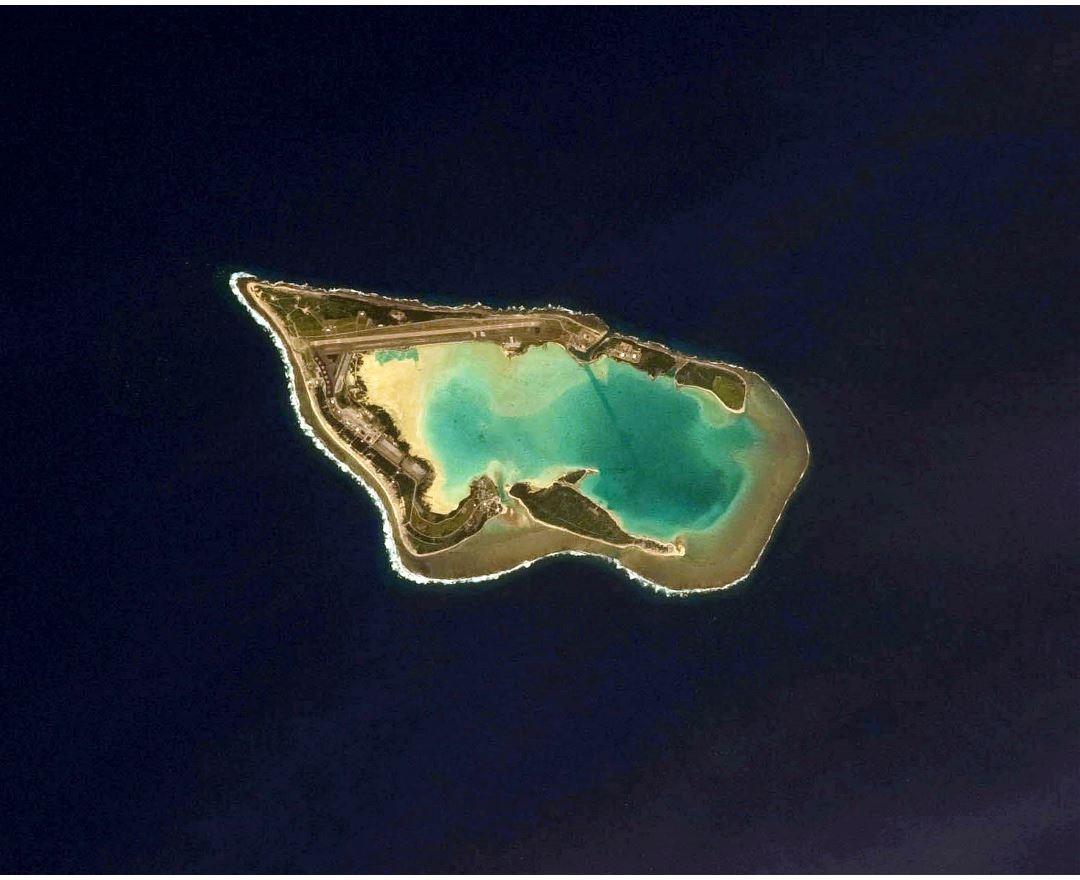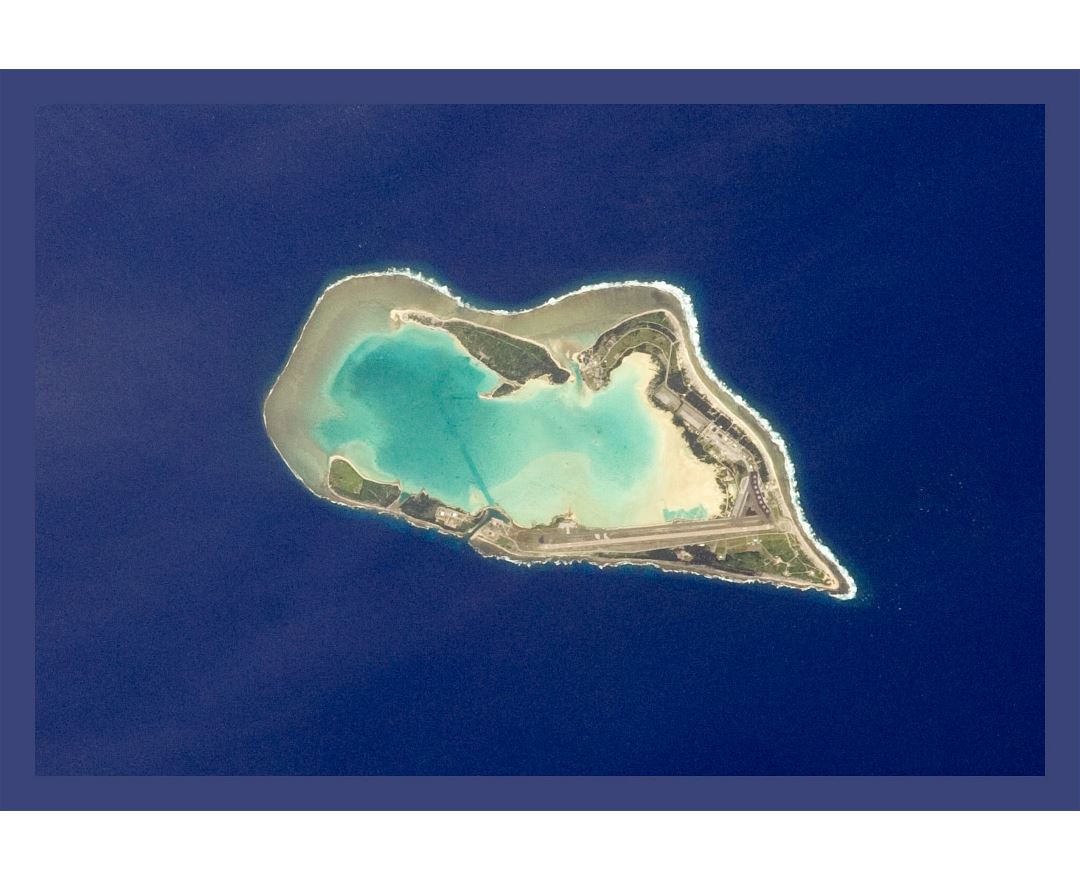Wake Atoll
Wake Island (also known as Wake Atoll) is a coral atoll in the western Pacific Ocean in the northeastern area of the Micronesia subregion, 1,501 miles (2,416 kilometers) east of Guam, 2,298 miles (3,698 kilometers) west of Honolulu and 1,991 miles (3,204 kilometers) southeast of Tokyo. The island is an unorganized, unincorporated territory of the United States that is also claimed by the Republic of the Marshall Islands. Wake Island is one of the most isolated islands in the world and the nearest inhabited island is Utirik Atoll in the Marshall Islands, 592 miles (953 kilometers) to the southeast.
Wake Island, one of 14 U.S. insular areas, is administered by the United States Air Force under an agreement with the U.S. Department of the Interior. The center of activity on the atoll is at Wake Island Airfield (IATA: AWK, ICAO: PWAK), which is primarily used as a mid-Pacific refueling stop for military aircraft and an emergency landing area. The 9,800-foot (3,000 m) runway is the longest strategic runway in the Pacific islands. South of the runway is the Wake Island Launch Center, a missile launch site of the Ronald Reagan Ballistic Missile Defense Test Site operated by the United States Army Space and Missile Defense Command and the Missile Defense Agency. The Base Operations Support contractor at Wake is Chugach Federal Solutions, Inc. About 94 people live on the island, and access to it is restricted. Population fluctuates depending on operations being conducted by Missile Defense Agency activities.
On December 11, 1941, Wake Island was the site of the Empire of Japan's first unsuccessful attack on American forces in the Battle of Wake Island when U.S. Marines, with some US Navy personnel and civilians on the island repelled an attempted Japanese invasion, sinking two enemy destroyers and a transport. The island fell to overwhelming Japanese forces 12 days later in a second attack, this one with extensive support from Japanese carrier-based aircraft returning from the attack on Pearl Harbor naval and air bases in Hawaii further east, four days previously. Wake Island remained occupied by Japanese forces until the end of the war in September 1945.
The submerged and emergent lands at the atoll are a unit of the Pacific Remote Islands Marine National Monument.
Wake island, together with eight other insular areas, comprises the United States Minor Outlying Islands, a statistical designation defined by the International Organization for Standardization's ISO 3166-1 code. They are collectively represented by the ISO 3166-1 alpha-2 code UM, Wake Island itself is represented by the ISO 3166-2 code UM-79.

